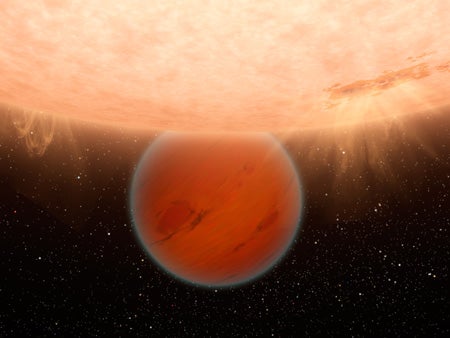A Neptune-sized exoplanet orbiting a small star about 33 light years away could be a key stepping stone on the path to making sense of an Earth twin.
The finding is the latest advance in the quest to measure Earth-like planets that could possibly host signs of life, which researchers expect to find in the next few years.
“GJ 436b is the smallest exoplanet whose direct light we’ve been able to measure,” said Kevin Stevenson, the University of Central Florida’s first planetary sciences doctoral student and lead author of the study, which will be published Thursday, April 22, in Nature.
The results are surprising. Neptune-sized planets as hot as 800 Kelvin — about 1,000 degrees Fahrenheit — should contain high levels of methane and very little carbon monoxide, according to standard chemistry.
Instead, the researchers found 7,000 times less methane than expected and plenty of carbon monoxide, which suggests that scientists should be more flexible in their theories about the atmospheres of similar planets.
Read more about Stevenson’s research on UCF Newsroom.
